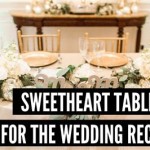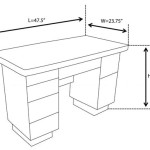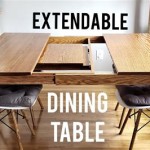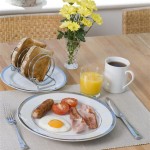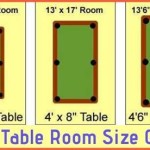DIY Glass Table Base Ideas: Crafting Unique Support Structures
Glass tabletops offer a sleek, modern aesthetic to any space. However, the transparent nature of glass necessitates a well-designed and visually appealing base to provide both support and visual harmony. Constructing a DIY glass table base presents an opportunity to personalize furniture, utilize unique materials, and tailor the design to specific spatial and stylistic requirements. This article explores several DIY glass table base ideas, focusing on material selection, construction techniques, and design considerations.
The first step in any DIY project is determining the size and shape of the glass tabletop. This critical measurement dictates the dimensions and structural requirements of the base. A larger, heavier tabletop will necessitate a more robust and stable base. The shape of the tabletop, whether round, square, rectangular, or custom, will influence the design of the support structure. Once the tabletop dimensions are established, designers can begin exploring suitable base materials and construction methods.
Exploring Material Options for Glass Table Bases
The choice of materials plays a significant role in the overall aesthetic and structural integrity of the glass table base. Common material options include wood, metal, concrete, and repurposed items, each offering distinct advantages and disadvantages.
Wood offers versatility in design and can be easily worked with using basic woodworking tools. Softwoods, such as pine, are readily available and relatively inexpensive, but require sealing and staining for durability and aesthetic appeal. Hardwoods, such as oak or maple, offer greater strength and a richer appearance, but are typically more expensive and require more specialized tools for shaping and finishing. Wooden bases can be constructed in various styles, from simple geometric forms to more intricate carved designs. The joinery method, such as mortise and tenon, dovetail, or screw and dowel construction, must be carefully considered to ensure structural stability. Wood is highly customizable with stains and paints, allowing it to complement a wide range of interior design schemes.
Metal provides exceptional strength and durability, making it an ideal choice for supporting heavier glass tabletops. Steel is a common choice due to its strength and affordability, but requires welding or bolting techniques for assembly. Aluminum is lighter than steel and corrosion-resistant, making it suitable for both indoor and outdoor applications. Metal bases can be fabricated in minimalist, modern designs or more ornate, industrial styles. Powder coating or painting can be applied to protect the metal from rust and corrosion, as well as to customize its appearance. Metalworking requires specialized tools, such as welders, grinders, and cutting torches, and safety precautions should be observed when working with these tools.
Concrete offers a unique, industrial aesthetic and provides a solid, stable base for glass tabletops. Concrete bases can be cast in various shapes and sizes using molds constructed from wood, plastic, or foam. Reinforcement with rebar or wire mesh is essential to prevent cracking and ensure structural integrity. Concrete can be tinted with pigments to achieve different colors and textures. The weight of concrete should be considered, as it can make the table difficult to move. Sealing the concrete is necessary to prevent staining and moisture absorption. Working with concrete requires appropriate protective gear, such as gloves and respirators, due to the potential for skin and respiratory irritation.
Repurposed items can be creatively integrated into glass table bases, adding a unique, eco-friendly touch. Examples include reclaimed wood beams, vintage sewing machine bases, antique metal gears, or even stacked books. The structural integrity of the repurposed item must be carefully evaluated to ensure it can support the weight of the glass tabletop. Modifications may be necessary to adapt the repurposed item to function as a stable and level base. Repurposed items often possess a distressed or weathered appearance, which can contribute to a rustic or eclectic aesthetic. Careful cleaning and sealing are often necessary to prevent further deterioration or contamination.
Design Considerations for Stability and Aesthetics
Beyond material selection, several design considerations are critical for ensuring the stability and aesthetic appeal of the glass table base. These include weight distribution, surface contact, and visual integration with the glass tabletop.
Proper weight distribution is paramount for stability. The base must be designed to evenly distribute the weight of the glass tabletop across its footprint. A wider base provides greater stability, especially for larger or heavier tabletops. The placement of supporting elements, such as legs or pedestals, should be carefully considered to avoid tipping or wobbling. Utilizing a central pedestal with a wide base can be an effective solution for round or square tabletops. For rectangular tabletops, multiple supporting legs positioned near the corners provide optimal stability. Reinforcing the joints between structural elements is crucial for preventing movement or failure under load. Finite element analysis software can be used to simulate stress distribution and optimize the design for maximum strength and stability.
Adequate surface contact between the base and the glass tabletop is essential for preventing slippage and ensuring a secure connection. Rubber or silicone pads can be placed between the base and the glass to provide cushioning and increase friction. These pads should be non-marking to avoid damaging the glass surface. For metal bases, a threaded insert can be embedded into the metal and used to bolt the glass tabletop securely. Alternatively, a specialized adhesive designed for bonding glass to metal can be used. The adhesive must be compatible with both the glass and the metal to ensure a lasting bond. Clamps or jigs may be necessary to hold the glass and base together while the adhesive cures.
Visual integration with the glass tabletop involves considering the overall aesthetic and ensuring that the base complements the transparent nature of the glass. A minimalist base design can highlight the clean lines of the glass tabletop, while a more ornate base can add a touch of visual interest. The color and finish of the base should be chosen to coordinate with the surrounding decor. A contrasting base color can create a dramatic effect, while a complementary color can create a more harmonious look. The proportions of the base should be visually balanced with the size and shape of the tabletop. A base that is too small or too large can appear disproportionate and detract from the overall aesthetic.
Construction Techniques and Safety Precautions
The construction process varies depending on the chosen materials and design. Regardless of the method employed, safety should be a top priority throughout the project.
When working with wood, basic woodworking skills are required, including measuring, cutting, sanding, and joining. Power tools, such as saws, drills, and sanders, should be used with caution and appropriate safety gear, such as eye protection and ear protection. Wood glue and screws are commonly used to join wooden components. Clamps are essential for holding pieces together while the glue dries. A respirator should be worn when sanding to avoid inhaling wood dust. Proper ventilation is necessary when applying stains, paints, or sealers.
Metalworking requires specialized skills and equipment. Welding is a common technique for joining metal components, requiring a welding machine, welding helmet, gloves, and protective clothing. Grinding and cutting metal can generate sparks and debris, so eye protection and a face shield are essential. Metal edges can be sharp, so gloves should be worn to prevent cuts. Proper ventilation is necessary to avoid inhaling fumes from welding or grinding. Bolting is an alternative to welding and can be used to assemble metal components using nuts, bolts, and washers. Threaded inserts can be used to create strong, secure connections.
Working with concrete involves mixing, pouring, and curing the concrete mixture. A concrete mixer or hand mixer is necessary for thoroughly combining the cement, aggregate, and water. Molds can be constructed from wood, plastic, or foam to create the desired shape. Reinforcement with rebar or wire mesh is essential for preventing cracking. Gloves and a respirator should be worn to protect the skin and lungs from concrete dust and chemicals. The concrete must be allowed to cure properly, which can take several days or weeks, depending on the type of concrete and environmental conditions. Control joints can be incorporated into the design to prevent cracking due to expansion and contraction.
When repurposing materials, careful cleaning and preparation are essential. Remove any loose debris, rust, or paint. Sanding or grinding may be necessary to smooth rough surfaces. Repurposed items may contain hazardous materials, such as lead paint, so appropriate precautions should be taken. Inspect the repurposed item for structural weaknesses and make necessary repairs or reinforcements. Securely attach the repurposed item to the glass tabletop using appropriate fasteners or adhesives. Ensure that the repurposed item is stable and level before placing the glass tabletop on top.

10 Diy Table Base Ideas For Glass Tops

16 Designs For A Low Cost Diy Coffee Table Wood Design Furniture

Diy Modern Glass Coffee Table Ideas Doctor

10 Diy Table Base Ideas For Glass Tops

Round Glass Coffee Table Designs Viraldecorations Design

Tree Stump Table Base Options D I Y Rustic Wood Coffee Tables

Base For Glass Table Top Tonuse With Granma And Grandpas Old In Garage Dining Bases Diy Pedestal

10 Diy Table Base Ideas For Glass Tops

Diy Patio Table Top Fixing A Broken On Budget

Miami Modern Rectangular Clear Glass Coffee Table With Square Silver Chrome Metal Legs For Minimalist Living Room Diy At B Q


